Abstract
Howes, William V. (Massachusetts Institute of Technology, Cambridge). Effect of glucose on the capacity of Escherichia coli to be infected by a virulent λ bacteriophage. J. Bacteriol. 90:1183–1193. 1965.—A substrate-dependent phenotypic resistance to phage λvir was observed among cells of Escherichia coli W3350 and C600 grown aerobically on glucose. Similar cells grown on glycerol were sensitive. When cells of W3350 grown on glycerol were transferred to glucose, the rate of appearance of the resistant fraction was proportional to the growth rate and became zero after 5.5 to 6.0 generations. Cells grown on glucose, upon transfer to glycerol, became sensitive within one generation. P32 studies with W3350 indicated that the resistant cells did not adsorb phage. Furthermore, among the sensitive cells approximately the same number of particles adsorbed to each cell. Among five strains of E. coli K-12 investigated, three did not exhibit this aerobic phenotypic resistance. W3350 grown anaerobically on glucose was 100% resistant. Anaerobic growth had no further effect on C600. These inconsistent effects of anaerobiosis probably involved a mechanism different from that of aerobic growth.
Full text
PDF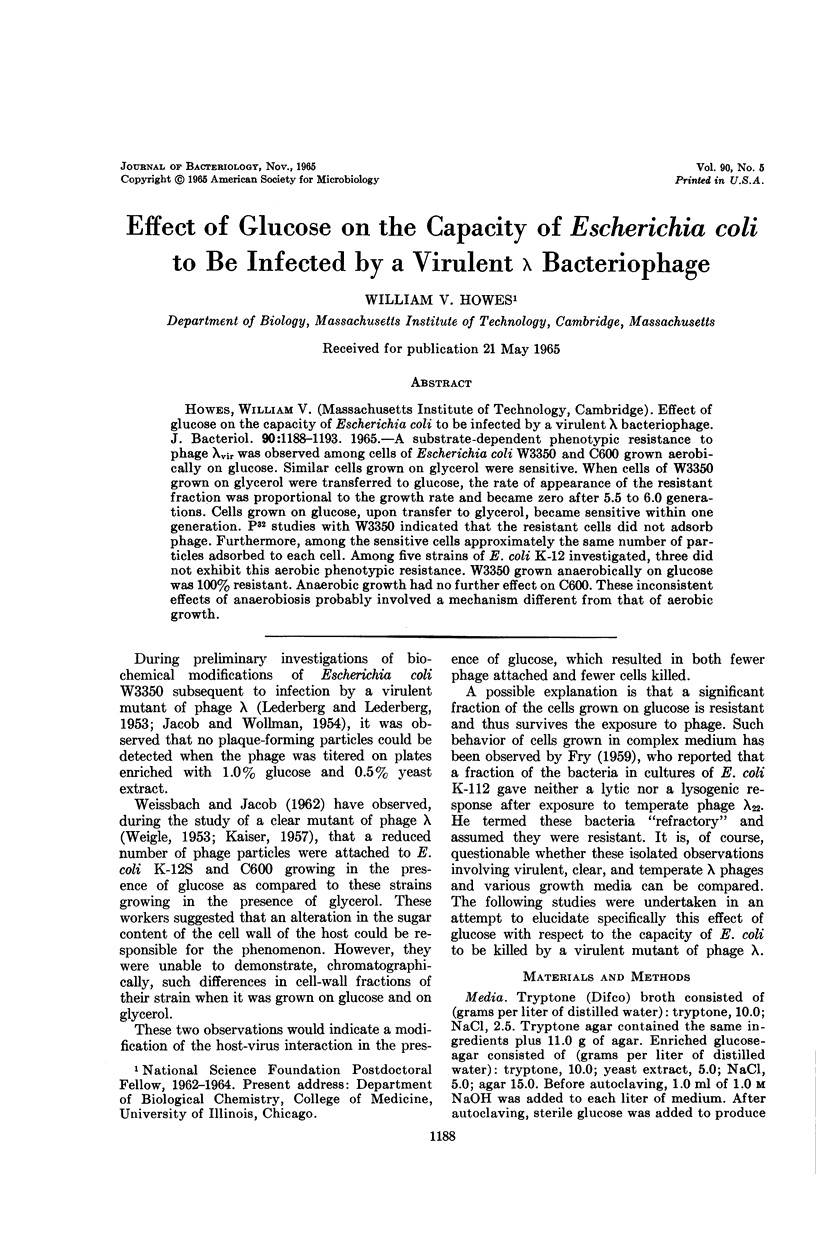
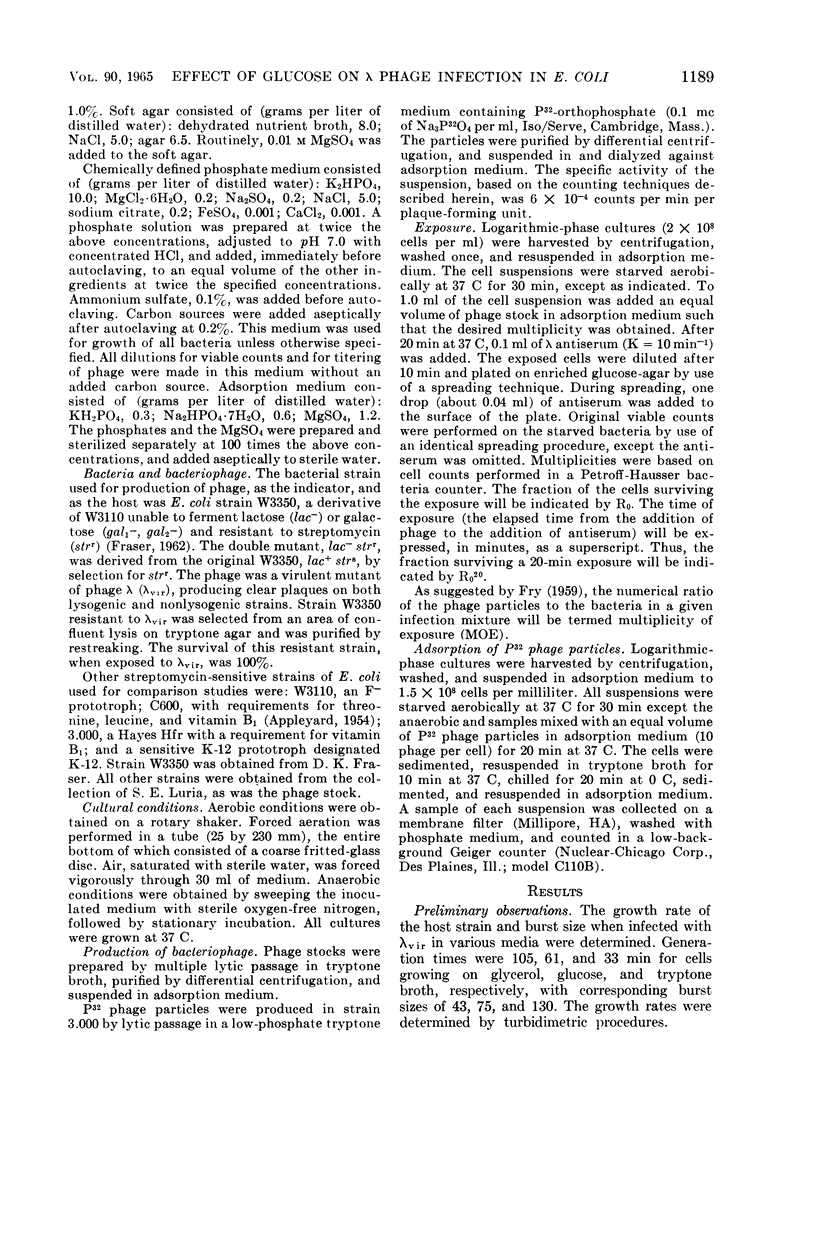
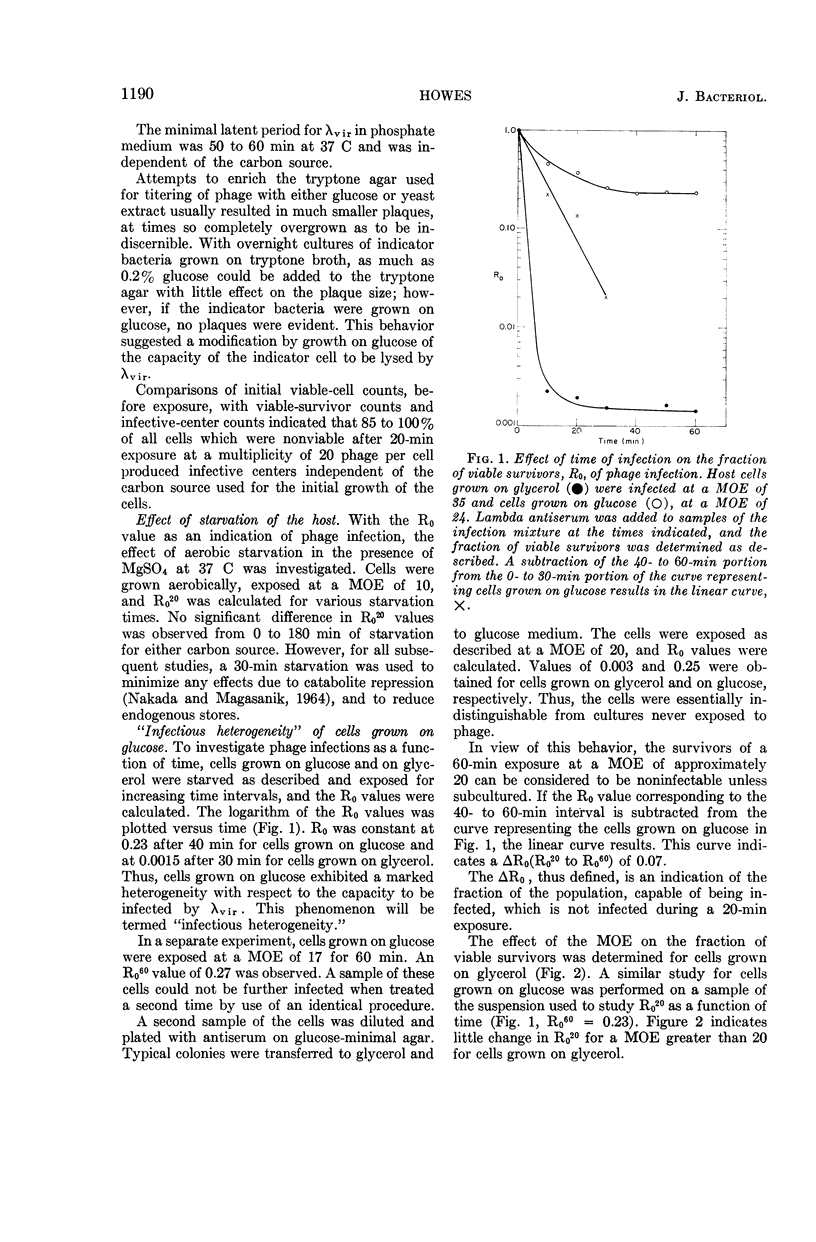
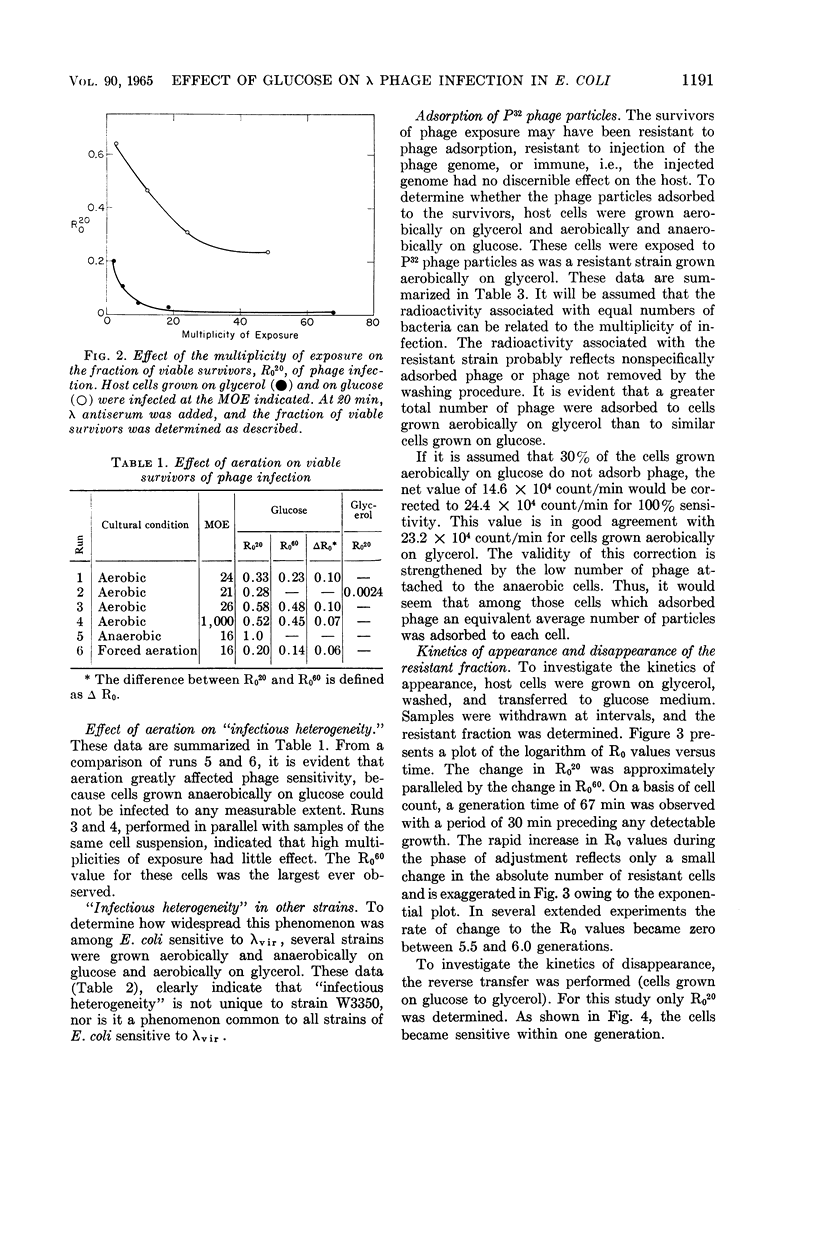
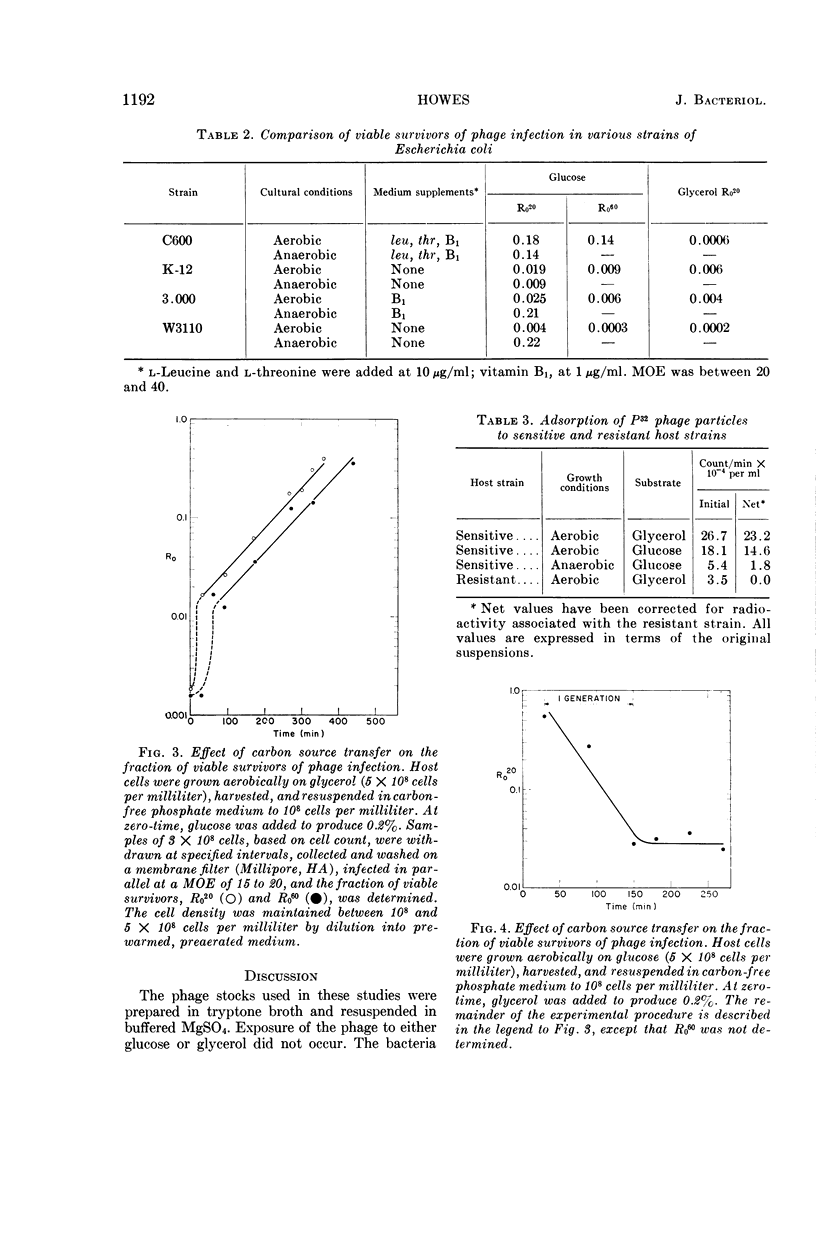
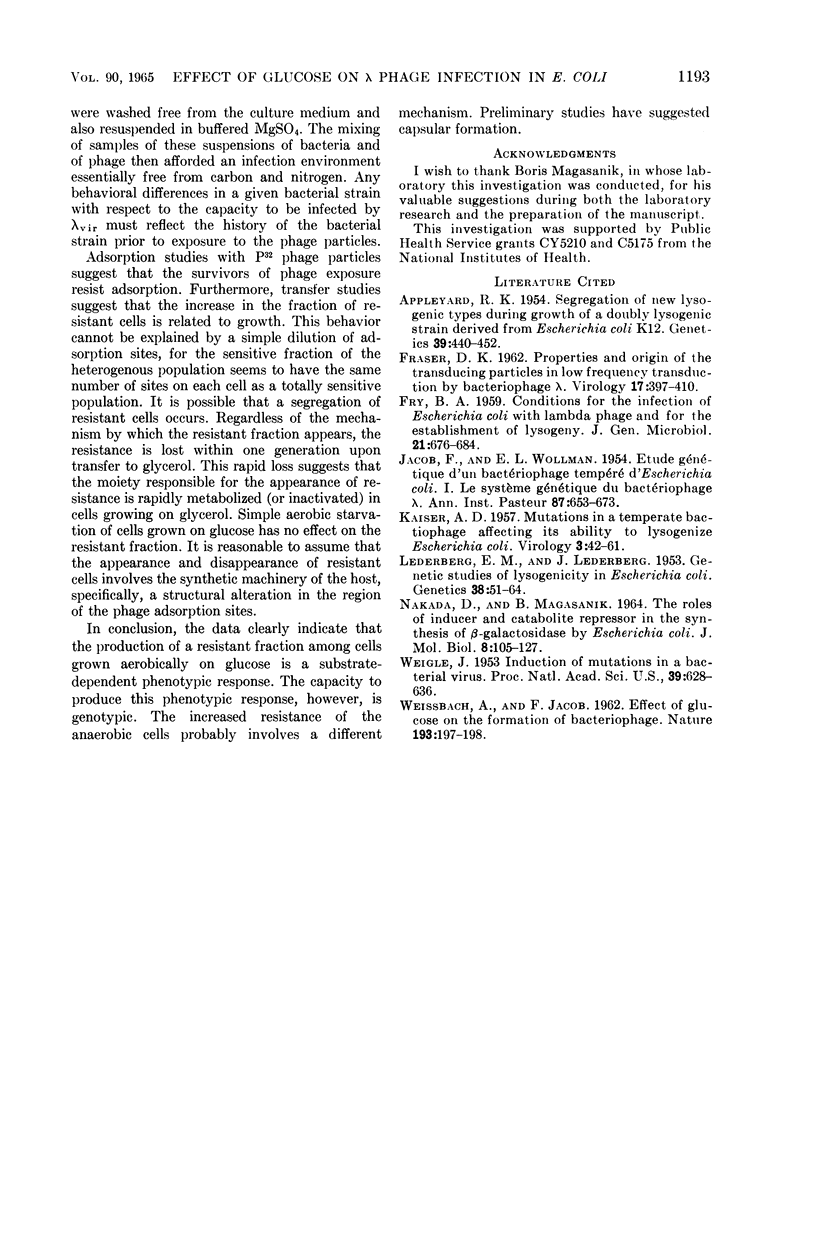
Selected References
These references are in PubMed. This may not be the complete list of references from this article.
- Appleyard R K. Segregation of New Lysogenic Types during Growth of a Doubly Lysogenic Strain Derived from Escherichia Coli K12. Genetics. 1954 Jul;39(4):440–452. doi: 10.1093/genetics/39.4.440. [DOI] [PMC free article] [PubMed] [Google Scholar]
- FRASER D. K. Properties and origin of the transducing particles in low frequency transduction by bacteriophage lambda. Virology. 1962 Jul;17:397–410. doi: 10.1016/0042-6822(62)90135-6. [DOI] [PubMed] [Google Scholar]
- FRY B. A. Conditions for the infection of Escherichia coli with lambda phage and for the establishment of lysogeny. J Gen Microbiol. 1959 Dec;21:676–684. doi: 10.1099/00221287-21-3-676. [DOI] [PubMed] [Google Scholar]
- JACOB F., WOLLMAN E. L. Etude génétique d'un bactériophage tempéré d'Escherichia coli. l. Le système genétique du bactériophage. Ann Inst Pasteur (Paris) 1954 Dec;87(6):653–673. [PubMed] [Google Scholar]
- KAISER A. D. Mutations in a temperate bacteriophage affecting its ability to lysogenize Escherichia coli. Virology. 1957 Feb;3(1):42–61. doi: 10.1016/0042-6822(57)90022-3. [DOI] [PubMed] [Google Scholar]
- Lederberg E M, Lederberg J. Genetic Studies of Lysogenicity in Escherichia Coli. Genetics. 1953 Jan;38(1):51–64. doi: 10.1093/genetics/38.1.51. [DOI] [PMC free article] [PubMed] [Google Scholar]
- NAKADA D., MAGASANIK B. THE ROLES OF INDUCER AND CATABOLITE REPRESSOR IN THE SYNTHESIS OF BETA-GALACTOSIDASE BY ESCHERICHIA COLI. J Mol Biol. 1964 Jan;8:105–127. doi: 10.1016/s0022-2836(64)80153-4. [DOI] [PubMed] [Google Scholar]
- WEISSBACH A., JACOB F. Effect of glucose on the formation of bacteriophage lambda. Nature. 1962 Jan 13;193:197–198. doi: 10.1038/193197a0. [DOI] [PubMed] [Google Scholar]
- Weigle J. J. Induction of Mutations in a Bacterial Virus. Proc Natl Acad Sci U S A. 1953 Jul;39(7):628–636. doi: 10.1073/pnas.39.7.628. [DOI] [PMC free article] [PubMed] [Google Scholar]


